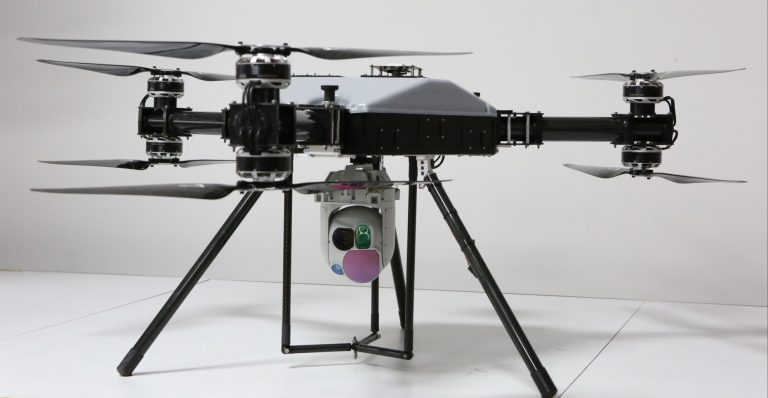Tethered drone or UAV Tether system systems are becoming increasingly popular due to their ability to provide continuous power and data transfer, making them ideal for various applications ranging from surveillance to communications. This blog explores the different types of tethered drone systems, provides a comprehensive buying guide, offers useful tips, details their uses, and answers frequently asked questions.
What is a Tethered Drone System?
A tethered drone system consists of an unmanned aerial vehicle (UAV) connected to a ground station via a tether. This tether supplies continuous power to the drone, enabling extended flight durations that surpass the limitations of battery-powered drones. Additionally, the tether can facilitate secure data transmission between the drone and the ground station.
Key Characteristics:
Continuous Power Supply: Unlimited flight duration as long as the ground power source is available.
Secure Data Transfer: Reduced risk of data interception due to a wired connection.
Stable Operation: Increased stability in strong winds or turbulent conditions due to the tether.
Safety: Reduced risk of flyaways as the drone is physically tethered to the ground station.
Types of Tethered Drone Systems
Stationary Tethered Drones:
Description: Designed to hover in a fixed position while performing tasks such as surveillance or communications.
Applications: Ideal for monitoring events, securing perimeters, and providing communication relays.
Mobile Tethered Drones:
Description: Mounted on vehicles, allowing for mobility while maintaining continuous power and data transfer.
Applications: Useful for mobile surveillance, disaster response, and mobile communication hubs.
Hybrid Tethered Drones:
Description: Can switch between tethered and untethered modes, providing flexibility for various missions.
Applications: Suitable for operations that require extended flight times and the ability to operate untethered for specific tasks.
Buying Guide for Tethered Drone Systems
When purchasing a tethered drone system, consider the following factors to ensure you choose the right system for your needs:
Application Requirements:
Determine the primary use case (e.g., surveillance, communications, inspection).
Consider the required altitude and operational range.
Power and Tether Specifications:
Power Supply: Ensure the ground station can provide sufficient power for the drone’s operations.
Tether Length: Choose a tether length that meets your altitude requirements.
Durability: Look for tethers that are resistant to weather conditions and mechanical wear.
Payload Capacity:
Ensure the drone can carry the necessary payload (cameras, sensors, communication devices) for your application.
Data Transmission:
Verify that the tether supports secure and high-speed data transfer.
Stability and Safety Features:
Look for features such as automatic altitude hold, wind resistance, and emergency landing capabilities.
Mobility Needs:
If you require mobility, consider a mobile tethered drone system or a hybrid system.
Tips for Using Tethered Drone Systems
Site Assessment:
Conduct a thorough assessment of the deployment site to identify potential obstacles and ensure safe operation.
Tether Management:
Use a tether management system to prevent tangling and ensure smooth operation.
Regularly inspect the tether for signs of wear and tear.
Weather Considerations:
Monitor weather conditions and avoid flying in extreme weather to ensure the safety of the drone and the integrity of the tether.
Routine Maintenance:
Perform regular maintenance checks on both the drone and the ground station to ensure optimal performance.
Clean and inspect the tether regularly.
Compliance and Regulations:
Familiarize yourself with local regulations regarding tethered drone operations and ensure compliance.
Uses of Tethered Drone Systems
Surveillance and Security:
Application: Continuous monitoring of large areas such as borders, events, and critical infrastructure.
Benefit: Provides a stable and persistent aerial view, enhancing security and response times.
Communications:
Application: Establishing temporary communication networks in remote or disaster-stricken areas.
Benefit: Ensures reliable and secure communication links where conventional infrastructure is unavailable.
Broadcasting:
Application: Live broadcasting of events such as sports, concerts, and public gatherings.
Benefit: Provides a unique and dynamic aerial perspective with uninterrupted power supply.
Environmental Monitoring:
Application: Monitoring environmental conditions, wildlife, and natural disasters.
Benefit: Enables long-duration observations and data collection.
Inspection and Maintenance:
Application: Inspecting infrastructure such as power lines, bridges, and pipelines.
Benefit: Reduces the need for manual inspections and enhances safety.
FAQs about Tethered Drone Systems
- What is the maximum flight time of a tethered drone?
Tethered drones can fly indefinitely as long as they are connected to a continuous power source via the tether.
- Can tethered drones operate in bad weather?
While tethered drones can offer increased stability, extreme weather conditions such as high winds, heavy rain, or lightning should be avoided to ensure safety and prevent damage.
- How high can a tethered drone fly?
The maximum altitude is typically limited by the length of the tether, which can range from a few hundred meters to over a kilometer, depending on the system.
- What are the advantages of a tethered drone over a battery-powered drone?
The primary advantages include continuous power supply for extended operations, secure data transmission, increased stability, and safety due to the physical tether.
- Are tethered drones easy to transport and deploy?
Tethered drones designed for mobility or with compact ground stations are relatively easy to transport and deploy. However, larger systems may require more setup time and specialized transport.
- What maintenance is required for tethered drone systems?
Regular maintenance includes inspecting the tether for wear and tear, checking the drone and ground station components, and ensuring software and firmware are up to date.
Tethered drone systems offer a versatile and reliable solution for various applications, providing continuous power and secure data transmission. Understanding the different types of tethered drones, their applications, and how to properly use and maintain them can significantly enhance their effectiveness. Whether for surveillance, communication, broadcasting, or inspection, tethered drones are invaluable tools in today’s technologically advanced world.
Contact Linden Photonics to get a Tethered Drone Systems quote or Call Us at (978) 392-7985


2 comments
Mike
05/21/2023 at 9:26 pm
I want to to thank you for this great read!! I absolutely loved every bit of it. Ive got you book-marked to look at new stuff you postÖ
Philip
08/07/2023 at 9:08 am
Hey, thanks for the blog post.Really looking forward to read more. Really Cool.